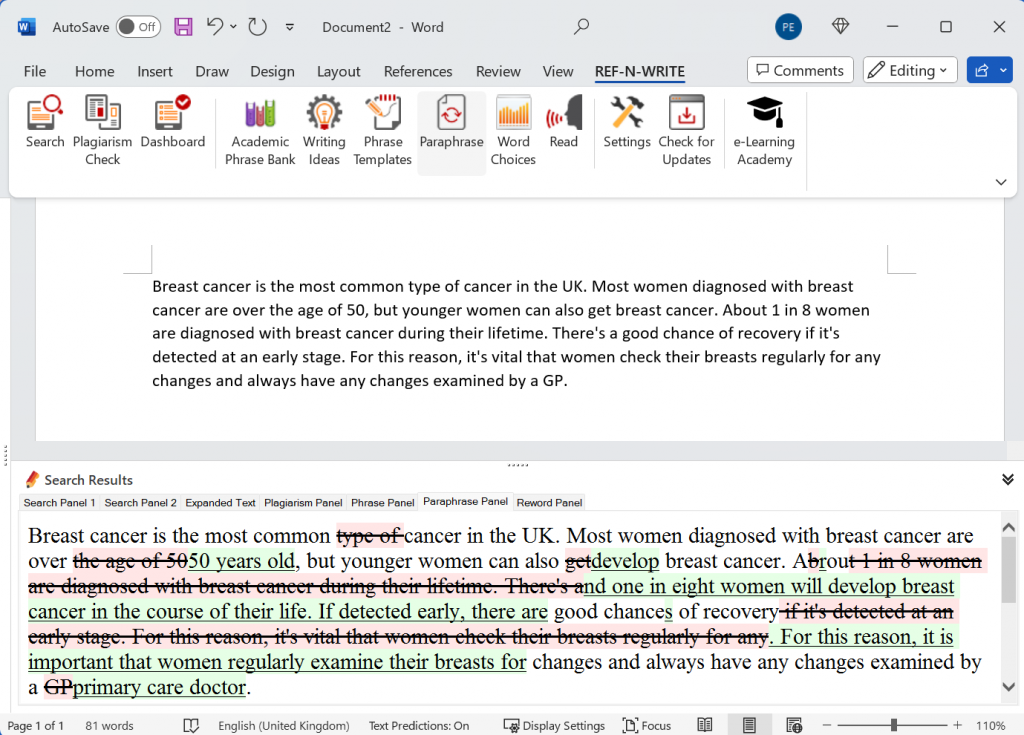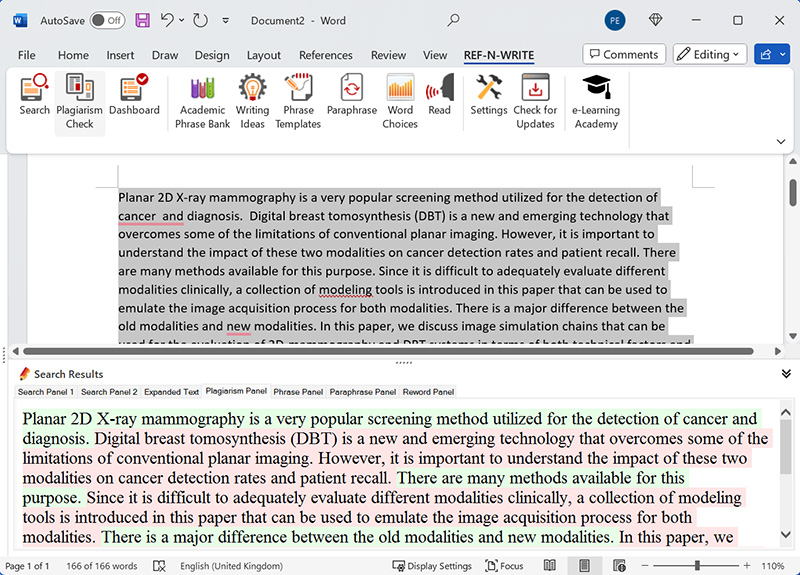Plagiarism | Plagiarism Checkers | Paraphrasing Techniques | Scholarly Paraphraser
Paraphrasing is the process of rewriting text into a different form but still retaining the core meaning of the text. Most people misunderstand the term paraphrasing and think it simply involves either rewording or rephrasing the text. Rewording is a simple process of swapping words with synonyms, whereas rephrasing involves changing the order of words in the text. In an academic context paraphrasing means conveying somebody else’s ideas or work in your own words in your essay paper.
When writing an academic paper or a research article, you should be very conscious about using text from other’s work and even your own previously published works. The use of text from other papers without proper referencing will constitute plagiarism, and the use of your own previous work will constitute self-plagiarism. If you are using text from your own articles then simple rewording and rephrasing will do, however, if you are using text from other’s work then the core idea should be rewritten in your own words.
In this blog, we discuss the importance of paraphrasing and highlight good paraphrasing techniques. We also discuss how academic paraphrasing tools and rewording tools can be used to rewrite your text. The blog concludes with a brief discussion on plagiarism checkers and how they can be used to avoid academic misconduct.
1. Paraphrasing Examples – Good and Bad Samples
Following are some examples of good and bad paraphrasing. The original text that is to be paraphrased is given below.
Mammography is the most common screening technique used for breast cancer screening. However, the technique has many limitations.
Original Text
In the example below, the text has been paraphrased by selectively rewording the text. The word ‘technique’ has been replaced by the word ‘method’, and the word ‘limitation’ has been replaced by the word ‘drawback’. Furthermore, no part of the text has been rephrased and rewritten.
Mammography is the most popular screening method used for breast cancer screening. However, the method has many drawbacks.
Bad Paraphrasing
In the following example, the user has just taking the idea from the original text and rewritten using completely new language. This qualifies as good paraphrasing as it goes beyond simple rewording and rephrasing.
Mammography is considered the gold standard technique for detecting breast cancers. Despite its widespread usage, it suffers from numerous shortcomings.
Good Paraphrasing
2. Good Paraphrasing Techniques
In most cases paraphrasing in academic text involves explaining somebody else’s work or technique in your paper. One way to do this would be to use ‘think aloud’ technique. This approach involves you explaining the technique aloud as you would to a colleague or a friend in everyday language and simultaneously typing it in a text editor or writing in a piece of paper.
When you look at the text, you will notice three things (1) the choice of words will be much simpler than the original source; (2) the order of words and ideas would have been changed and (3) the text will be a bit shorter than the original as it is more of a summary now. In the video below, the instructor explains how to paraphrase a piece of technical text using a practical example.
3. Citing the Source
If you are using direct quotes from previously published documents. Then, the text should be enclosed in quotes followed by the reference.
“I have copied this text word to word from the source document and hence enclosing in quotes” (Author et al., 2013)
It is very important to cite the source wherever appropriate even if the text has been fully paraphrased. Following examples show how to give credits to the author even if the text has been completely rewritten by you.
According to Author et al. (2013), this method is ….
Author et al. (2013) states that ….
4. Paraphrasing Software
There are many paraphrasing tools, article rewriters and rewording tools available that allow users to quickly rewrite large chunks of text to produce unique content for websites. These tools simply replace the words in the text with their synonyms and some tools reorder the words. These tools are not suitable for academic writing since students are required to understand the meaning of the text and then rewrite the text in their own words.
When dealing with scientific and academic documents, it is very important to use a paraphrasing tool that has been specifically designed for academic writing. Ref-n-write software comes with scholarly paraphrasing tools and proofreading features. The tool will automatically rewrite your text into scientific language and also fix grammatical errors in your text. The tool is being used by millions of academics and many universities worldwide. The tool also contains the world’s largest academic phrasebank and provides users with writing ideas in the form of phrase templates extracted from high-quality scientific documents. The students can use these phrase templates as guidance to reword and rewrite their text. Following is a screenshot from the REF-N-WRITE software that demonstrates the scholarly paraphrasing tool feature.

5. Plagiarism Checkers and Detectors
It is a good practice to run your academic essays and papers through plagiarism detection tools to check if your text is unique. There are many paid and free plagiarism checkers available. Most universities require essays to have less than 10% overlap with previous documents. However, it is good practice to use a plagiarism-checking tool during writing so that you can check for text overlap and fix the issues while writing rather than checking for plagiarism after finishing your work. This will save you a lot of time and effort.
Ref-n-write software comes with a plagiarism feature that will enable you to check for plagiarism while writing on the fly within Microsoft Word. A lot of students find it very handy. Ref-n-write is the only tool that checks for text overlap against local documents on your computer. It means that none of your text will be uploaded to the internet for checking purposes and everything stays on your computer. Following is a screenshot from the REF-N-WRITE software that demonstrates the plagiarism checking feature.








If a sentence is paraphrased, will turnitin plagerism detect it